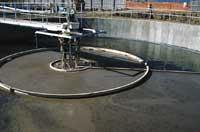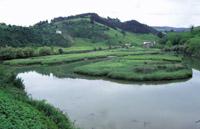Clean water with plants
2008/01/01 Lakar Iraizoz, Oihane - Elhuyar Zientzia Iturria: Elhuyar aldizkaria
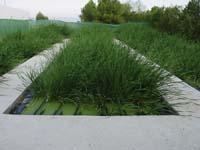
The reuse of wastewater and the elimination of discharges to rivers and/or the sea are some of the advantages offered by the phytoelimination system. Only aquatic plants and associated communities are used in these water purification systems without the need for chemical additives.
Phytoregulation systems are not man-made. They are aquatic environments formed by imitations of ecosystems that are generated in natural wetlands, that is, in lands covered by a shallow water sheet for much or all of the year. In wetlands the flow of water is very slow and the living beings that grow in them have enough time to clean up the possible residues of the arriving water. In this way, they preserve in good quality the groundwater and surface waters that surround them.
Not only plants
In a phytonatural system, plants are essential. However, if they were alone, they could do little to properly clean the water. To properly remove all components that pollute the waters, they need the collaboration of several living beings. The works that some carry out are raw materials for others and the interaction between all allows the cleaning of water.
As plants are indigenous living beings, they use water, carbon dioxide and solar energy to produce the sugars they need to grow and feed. But plants are not only made up of sugars, but they have many other ingredients, such as proteins, genetic material, pigments, etc. And to get them they need other elements: nitrogen, phosphorus, calcium...
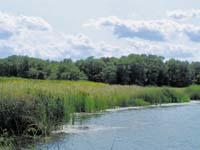
Aquatic plants obtain these elements from the compounds present in the water. But they cannot absorb any compound. For example, to obtain phosphorus, they absorb phosphates and to obtain nitrogen, ammonium ions or nitrates. If these elements are present in other compounds, they are inaccessible to plants.
In contaminated waters there are often organic components inaccessible to plants, that is, as remains of other living beings: dead plants, manure, sewage, food remains, etc. To eliminate them from water they need the participation of heterotrophic living beings. In fact, heterotrophic living beings are not able to produce their own organic matter and eat what is already synthesized, that is, they eat other living beings.
However, these aquatic residues cannot be eliminated by any heterotroph, but only feeds on a special group of living beings. Normally, the living beings that form this group are called decomposers and are formed by fungi and bacteria. The group of decomposers is very important because it has a characteristic that does not have the rest of heterotrophs: the others assimilate organic matter and eliminate as compound residues formed by organic matter. Decomposers remove as residues inorganic ions that can be absorbed by plants. In this way, plants take the step of definitively removing waste from water.
There are also organisms that prevent the indiscriminate growth of populations of decomposing bacteria: protozoa, which feed on bacteria. In addition, the residues that eliminate them are nitrogenous and phosphorous compounds that can be used by plants.
As can be seen, these special water purification systems form very complex communities. Despite the diversity of their living beings, they all have a common characteristic: they are aerobic, that is, they need oxygen to live. In water, there is actually oxygen and water internalizes atmospheric oxygen through gas exchanges, but the speed of gas exchange is usually very low, and the organisms present in water consume more oxygen than is introduced in this process.
Who supplies the necessary oxygen? Well, aquatic plants and algae that we have not mentioned so far. Because algae live submerged, during photosynthesis they eliminate the oxygen they produce as waste. Aquatic plants, on the other hand, absorb atmospheric oxygen through their parts in contact with the air and, thanks to an air transport system, take it to the submerged parts and expel it to the water.
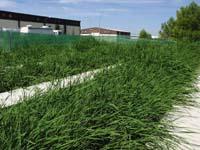
As can be seen, the components involved in a phyto-manufacturing system are closely linked together, providing all the elements needed to live. What if this system was maintained? Somehow, the cycle would be closed: plants would be killed, bacteria and fungi would break down those dead plants and behind would grow the plants that would use these nutrients. That is, the same components would work around.
For this not to happen, that is, for the purified water to come out clean of the system, it is easy to do it: from time to time the cultivated plants are removed from the water. In this way they do not let the cycle close, but incorporate more wastewater for the cultivation of new plants and remove them from the system before dying the cultivated plants. Plants produced by the system can be used as fodder for livestock or fertilization in rural areas.
On the other hand, the water purified by the plants is very clean, not enough to be potable, but can be used to water agricultural areas, gardens, etc., or to clean the streets.
Best artificial wet areas
In principle, natural wetlands could be used to clean polluted waters, but this should not be done because they can have very adverse effects and contaminate the aquifers and other ecosystems surrounding the wetland.
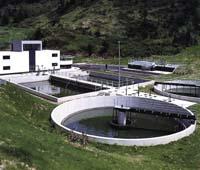
Instead of using them, man has created artificial wetlands with characteristics similar to natural wetlands for wastewater treatment. At the base, they are shallow lagoons or ditches (usually not reaching a meter deep) in which natural wetland plants are planted.
Artificiality offers a number of advantages, on the one hand, the possibility of isolating the area in which the wetland will be located before its flood to prevent water from subsequently infiltrating the surrounding ecosystems. On the other hand, the flow of water entering the wetland can be controlled, so that the water level cannot flow from time to time and the time that water remains in the wetland can be determined.
Indiscriminate use
The purification of urban, industrial and agricultural wastewater is one of the great ecological and economic challenges of today's society. And the advantages of phytoelimination systems are not of all kinds. Compared to other technological purification systems, artificial wetlands are cheaper (85% cheaper than conventional purification systems, according to the Polytechnic University of Madrid), are very effective in the purification of water with organic pollution (plants occupy about 90% of the nutrients of the inlet water), require very simple maintenance and facilities have no visual impact due to their natural appearance.
These systems are especially suitable for wastewater treatment generated in cities and agricultural activities. Both in one and the other, contaminated water has a high organic load and a high amount of inorganic substances available for plants.
However, water with other characteristics, such as wastewater generated in various industries, contain unused inorganic compounds for plants, which cannot be purified either by plants or by decomposers. This is the weak point of phytoelimination systems.
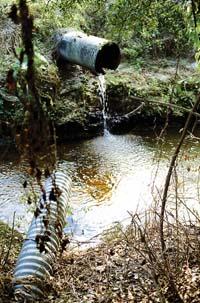
Leaving aside the advantages and weaknesses, it must be borne in mind that these systems are living systems that must be monitored in part. On the one hand, water from towns or cities should not be used directly. In these waters, in addition to the waste mentioned, there are large solids, sands, floating materials and fats that wetland communities cannot remove from water. Therefore, before introducing them into the wetland it is convenient for these components to leave the water.
On the other hand, the volume of water entering the treatment plant should also be limited, as plants have a limited capacity to receive nutrients from the water. In addition, the implementation of a system of these characteristics requires a large surface (4 plants/m 2), and the greater the volume of water to be purified, the greater the necessary surface.
In large urban centres, it is customary that large areas are not available. Therefore, phytoregulation systems are especially suitable for the purification of wastewater from urban centers of limited population, either because the volume of water generated is suitable so that it can be cleaned by a phytoregulation system, or because in small municipalities there are no big problems to channel the land to this effect.
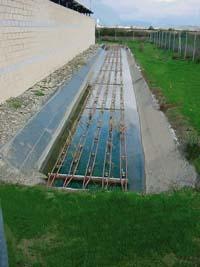
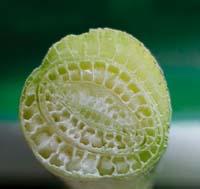

Gai honi buruzko eduki gehiago
Elhuyarrek garatutako teknologia




